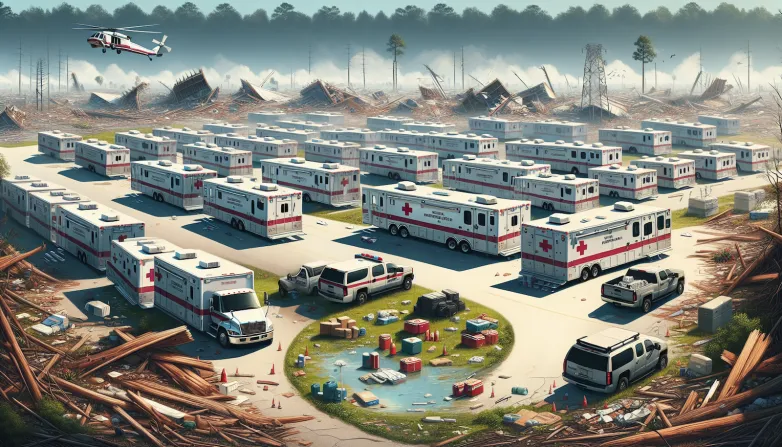The Critical Role of Emergency Response Trailers in Crisis Management

In times of catastrophe, the speed and efficiency of the initial response can shape the recovery process. Access to top-tier emergency response trailers and the rapid deployment of resources become crucial factors in saving lives and reducing impact. Central to such efforts are emergency response trailers, which are equipped to deliver vital aid in the wake of disasters, be it natural calamities, significant accidents or other crises.
Swift Aid Deployment Through Trailers
Consider a situation where every moment is precious, like in the immediate aftermath of a significant earthquake or amidst a ferocious storm. Emergency response trailers are essential in these critical periods as bad help may have even worse consequences than no help at all. Designed for rapid mobilization, these trailers facilitate prompt assistance to affected communities. They serve multiple purposes, from offering medical support to functioning as mobile command centers. This quick deployment capability is crucial for saving lives, safeguarding property and kickstarting the healing process for communities.
The strategic positioning of these trailers is another crucial aspect. By locating them in high-risk areas or regions prone to specific types of disasters, the response time can be significantly reduced. This proactive approach ensures that when a crisis strikes, the necessary resources are already in close proximity, ready to be deployed at a moment's notice. Such strategic placement can make a critical difference in scenarios where every second counts.
Customizable Solutions for Various Needs
The versatility of emergency response trailers is one of their most defining characteristics. These trailers can be customized for diverse requirements, from advanced medical units in isolated, devastated zones to mobile units for overseeing rescue operations. This flexibility is crucial, as the nature and needs of disasters vary—what works for flood assistance might not suit wildfire management. The ability to tailor these trailers for different situations underscores their indispensable value in crisis management.
Moreover, the modular design of many emergency response trailers allows for quick reconfiguration as the situation demands. For instance, a trailer initially set up as a medical unit can be rapidly converted into a food distribution center if the need arises. This adaptability is particularly valuable in the fluid, often unpredictable aftermath of a disaster, where needs can shift suddenly. The capacity to respond to these changing dynamics is a key strength of well-designed emergency response trailers.
Promoting Recovery and Resilience
Beyond immediate response, emergency response trailers play a role in sustaining long-term recovery. They can be repurposed to suit the evolving needs of affected areas, such as providing temporary homes for those displaced or serving as hubs for recovery activities. This adaptability not only aids in stabilizing communities post-disaster, but also in fortifying them against future adversities. By smoothing the path to recovery, these trailers help communities to rebuild themselves so that they are stronger and more resilient than before.
In addition to their tangible contributions, emergency response trailers also serve a symbolic role in the recovery process. Their presence in affected communities is a visible sign of support and solidarity, assuring residents that they are not alone in their struggle. This psychological boost can be just as important as the practical assistance these trailers provide. By helping to maintain morale and foster a sense of community, emergency response trailers contribute to the social and emotional resilience that is so critical in the wake of a disaster.
Overcoming Obstacles and Looking Forward
While the benefits of emergency response trailers in disaster management are clear, their deployment faces challenges. Issues related to transportation, setup in inaccessible areas and the logistics of resource management complicate their utilization. Nonetheless, ongoing improvements in trailer design and technology promise more effective, stronger and adaptable solutions. These advancements are likely to enhance disaster management practices, ensuring quicker, more efficient responses to crises, thereby preserving more lives and facilitating faster community recovery.
Also read
- 5 Best Practices for Driver Scheduling in Your Business
- Building an Off-Grid Nanogrid System Using Sodium-Ion Batteries
- Worried About Roof Damage? 5 Things You Need to Know About Solar Installation
- Solar Aeration System: Aerate Your Pond Without Electricity
- Understanding and Addressing Solar Panel Issues
